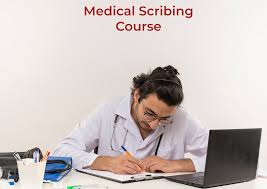
Navigating the Scribe World: Scribe Certification Explained
Medical scribing has become an essential component of healthcare documentation in recent years. A medical scribe has the responsibility of documenting the patient’s medical information during their physician’s appointment. The role of a medical scribe is critical as accurate documentation of medical information can positively impact the patient’s health outcomes.
To become a competent medical scribe, however, one must receive adequate training. In this article, we will explore the essentials of medical scribe training and the best practices to master the art of medical scribing.
Understanding Medical Terminology:
Medical scribes must have a solid understanding of medical terminology, abbreviations, and acronyms used in healthcare settings. To achieve that, a medical scribe must invest their time in learning and understanding medical terminology through attending classes, seminars, online courses, or self-study. It is essential for medical scribes to gain a comprehensive understanding of medical terminology to document patient information accurately.
Learn Basic Anatomy and Physiology:
A scribe should have a basic understanding of anatomy and physiology to better understand diseases and the medical conditions of patients. Understanding basic anatomy and physiology can help a medical scribe document the patient’s medical history, laboratory findings, and vital signs accurately, making it easier for their physicians to provide treatment plans.
Establish a Strong Knowledge of EHRs:
An Electronic Health Record (EHR) is an electronic document that consists of a patient’s medical information. Medical scribes must have the ability to document patient data accurately. That’s why it’s important for medical scribes to be trained to use EHRs. The medical scribe must learn how to input patient data accurately, retrieve patient histories, and update their current medical records. Utilizing EHRs to their fullest potential is critical to the success of medical scribes and their effectiveness in documenting patient medical information.
Hone Communication Skills:
Effective and clear communication is a vital aspect of medical scribing. Medical scribes should be able to communicate effectively with physicians, nurses, and patients. Medical scribes must be able to clarify and understand the information that a patient expresses during an appointment, ask associated questions that can assist the physician during decision-making, and document accurately.
Soft Skills are Vital:
Medical Scribe course can be a high-stress job with multiple tasks to accomplish within a limited period. So, it’s important for medical scribes to have excellent analytical, multitasking, and time management skills. A scribe must always be alert and ready to respond to the physician’s needs while maintaining accuracy and attention to detail.
short:
In short, medical scribing has become an essential role in healthcare settings. To become a competent and successful medical scribe, an understanding of medical terminology, anatomy and physiology, EHRs, clear communication, and soft skills are vital. Medical scribe training programs offer the essential skills that are necessary to become trained for this dynamic field. Mastering these essentials will equip medical scribes with the knowledge and skills required to accurately document a patient’s medical information ultimately resulting in better health outcomes for patients.